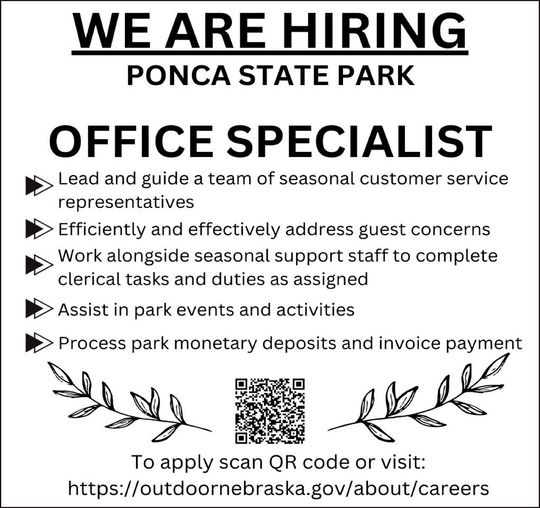OSMOND - At the recent meeting in Osmond, sponsored by the Lower Elkhorn Natural Resources District (LENRD), members of JEO Consulting Group were available to answer questions about the options for a flood risk reduction plan. One of those members was Ann Nissen, who sent the following responses to some of the questions about the identified alternatives presented at the meeting. ----- The project is funded through a federal grant from the Natural Resources Conservation Service (NRCS). This means we must follow NRCS rules and guidelines when evaluating and selecting project alternatives.
An important driver of those rules is the “project purpose,” and in this instance the project purpose is based on reducing flood damages, not on recreation. Therefore, each potential solution is evaluated mainly on how well it reduces flood damage. Recreational benefits are only considered if the solution is already effective at flood prevention.
Additionally, to qualify for funding, any proposed solution must have a positive benefit-cost ratio. This means the financial benefits of preventing flood damage must exceed the costs of designing and building the solution.
Here are the cost estimates for the two main options we’re considering: * Levee: Extending from County Road 865 to south of the railroad, costing approximately $4-9 million.
* 4th Street Road Raise: Estimated to cost around $1 million, offering nearly the same level of flood protection as the levee.
While adding a trail (one of the suggestions offered) might slightly improve the benefit-cost ratio, it's unlikely to make a significant impact. The benefits of a trail are calculated based on its usage, the demand for it, and how much users value it.
Given Osmond's population size, it’s unlikely that the trail would generate substantial monetary benefits. Moreover, the trail would add costs to the overall project.
Although a levee could protect Osmond from flooding, it has several drawbacks compared to other options: - Complicated gate or closure structures for the highway and railroad crossings.
- Long-term maintenance costs. - Additional regulatory requirements from FEMA.
- Need for more private land. - Potentially pushing additional floodwaters east of the river.
- Possible aesthetic issues, as the levee may need to be around 12 feet tall and could be very close to people’s backyards.
Currently, our team believes a simpler mix of alternatives would be more cost-effective and easier to implement: * 4th Street Road Raise: This would function similarly to a levee, preventing downtown flooding.
* Non-structural solutions for houses on the north side of Osmond and south of the railroad tracks: These are still being identified but might include smaller berms or flood-proofing buildings.
This combination of projects could still be compatible with future trails for Osmond.
Here’s how raising 4th Street will make a difference in the flooding around Osmond: * Utilizing Natural High Ground: Osmond benefits from natural high ground that prevents floodwaters from flowing through the town. Some of this natural high ground is cut down at 4th Street, which creates a pathway for overflow.
* Reinforcement and Connection: By raising 4th Street, the project aims to reinforce and connect the natural high ground. This involves elevating the road to match the level of the surrounding high terrain, effectively cutting off the overflow path that allows floodwaters to enter Osmond.
* Creating a Continuous Barrier: Raising 4th Street will create a continuous barrier that connects natural high terrain on either side, preventing floodwaters from breaching this point and flowing into the town. This raised road will serve as an extension of the existing natural defenses, enhancing their effectiveness.
* Significant Flood Reduction: By implementing this change, the flooding in Osmond can be reduced by about a foot and a half. This reduction, which includes both the extent and depth of flooding, is significant and can greatly diminish the impact of floodwaters on homes, businesses, and infrastructure in the town.
* Cost-Effective and Minimal Impact: As previously mentioned, raising 4th Street is a cost-effective solution, estimated at approximately $1 million. This approach avoids the higher costs and complexities associated with building a levee. Additionally, it minimizes aesthetic and spatial impacts compared to constructing a large levee structure.
It’s important to keep in mind that the development of this flood risk reduction plan is ongoing, with potential projects being studied in greater detail. The draft plan will undergo review and require approval from both the state and the national NRCS before the LENRD can consider it for adoption. ----- Written comments about the project will be accepted until July 26, 2024. To submit written comments, residents may download the comment form on the website, www.jeo.com/ north-fork-wfpo under the “Public Meetings” section and email it to Brianna Lock at [email protected], fill out the online comment form for which there is a link at the same site, or send written comments to Curt Becker at [email protected].







